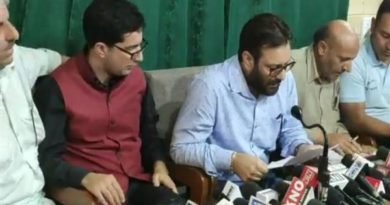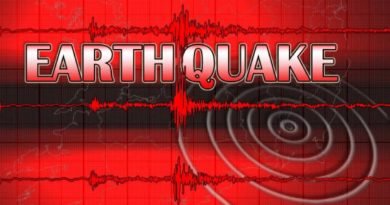What’s Behind the India and Pakistan Conflict in Kashmir
Two nuclear-armed rivals India and Pakistan have been fighting over Kashmir since their independence and the situation is exacerbating with time. Tensions flared once again on February 14, 2019, when more than 40 Indian paramilitary police were killed in India-administered Kashmir’s Pulwama. This attack was the deadliest since an Islamic insurgency started in the late 1980s.
India claimed that the Pakistan-based terrorist group Jaish-e-Mohammed was behind that suicide bombing and accused Pakistan of playing a direct role in the attacks. But Pakistan denied any role in the incident. After the attack, Indian Prime Minister Narendra Modi warned that “I want to tell the terror outfits and those aiding and abetting them that they have made a big mistake. They will have to pay a very heavy price for their actions”.
On February 26, India confirmed that it had launched air strikes, in which 12 Indian Mirage Jets drooped 1,000 kg bomb on the training camp of Jaish-e-Mohammad in Pakistan’s Khyber Pakhtunkhwa province and killed about 300 militants. “It is time for India to get a response for which time and place will be chosen by us” was the response of Major General Asif Ghafoor, the director general of Pakistan Inter-Services Public Relations. Later, Indian fighter jets were engaged in a battle around the line of control, Pakistan shot down two Indian military jets and captured a pilot. The escalation sparked fears in the region.
The conflict between Pakistan and India were created in 1947 when British rule ended. India was to be divided between Hindu and Muslim populations: the Hindu majority areas became India and the Muslim majority areas came under Pakistan.
Under the scheme of partition provided by the Indian Independence Act of 1947, Kashmir was free to join India or Pakistan. The Maharaja Hari Singh, the ruler of Kashmir, was Hindu while over 60 percent of the population was Muslim. He chose India and Kashmir was the only Muslim-majority state to become a part of Hindu-majority India. The Muslims started fighting and demanded to join Pakistan.
The first Pakistan and India conflict started when Muslim armed tribesmen invaded Kashmir from Pakistan on October 1947 to gain control of the state. Pakistan refused to recognize that Kashmir was acceded to India and attempted to capture it from India, while the Indian forces entered into the state to defend Kashmir, arguing that the ruler had acceded to India.
Pakistan claimed that Kashmir should become a part of Pakistan as it has a Muslim majority and claimed that the Hari Singh handed over control of Kashmir to India under duress, an action which had no legitimacy. On the other hand, India argued that the Hari Singh signed the Instrument of Accession on October 1947, handing control of the state of Kashmir to India and accused Pakistan of supporting Muslim militants in the region to create insecurity.
The war ended in January 1949 when a ceasefire was finally established by the UN. India got hold of Jammu and Kashmir while Pakistan controlled Gilgit-Baltistan, separated by the line of control. The UN recommended that both India and Pakistan should hold a referendum and let the people decide but that was never held. Both states still continue to rule their part of the territory and still aiming to get complete control.
In 1971, the East Pakistan movement which was demanding political rights from West Pakistan changed into the guerrilla struggle for the independence of Bangladesh. The Pakistani forces attempted to control the situation, but fighting started between the forces and Bengali nationalists and East Pakistan became a battleground. Then, in December 1971, the prime minister of India Indira Gandhi sent Indian troops to fight the Pakistan army in support of East Pakistan people. Finally, Bangladesh became an independent country on December 16, 1971 with the help of India. Fatalities reached 500,000.
India and Pakistan fought three wars over Kashmir in 1947, 1965 and in 1999. On May 1999, armed conflict between India and Pakistan took place in the Kargil town of Jammu and Kashmir as Pakistani forces entered into Indian territory in an attempt to get back areas of the valley that Pakistan wanted at the time of the partition. The death toll on the Indian side reached 527; while on the Pakistani side it was between 357 and 453. There were possibilities of escalation, but America played a role in de-escalating the conflict and compelled Pakistan to withdraw its troops.
In 2003, both countries signed a ceasefire agreement to prevent cross-border violence along the line of control. Pakistan then guaranteed to stop funding insurgents in its territory whereas India offered them an amnesty if they renounced militancy. However, India suspended dialogue with Pakistan after the Pathankot Air Force Station attack in 2016. India blamed Pakistan-based groups for the attack.
The disagreement of India and Pakistan is not the only reason for the violence in Kashmir. It is also because a large portion of its population doesn’t want to be ruled by India.
The various political groups of Indian Kashmir were struggling for autonomy for four decades. Restrictions on movement and crackdowns on non-violent political workers had finally compelled them to begin a movement of independence. The violent insurgency against Indian rule in the Kashmir Valley by Muslim separatists began in 1989. The groups later recruited young people to strengthen the insurgency for Kashmir’s freedom and still continued. Among these groups, some struggled to join Pakistan and some fought for the independent Kashmir while India attacked them by military power, killing their leaders and workers.
Currently, India has control on Jammu and Kashmir that covers 45 percent of Kashmir in the south and east, which Pakistan calls Indian-occupied Kashmir, whereas Pakistan controls Azad Kashmir and Gilgit-Baltistan which make up around 35 percent of the total territory in the north and west. Ten million people reside in Indian Kashmir and more than 3 million people live in Pakistani Kashmir. China controls another 20 percent of Kashmir, namely the Shaksgam Valley and the Aksai Chin region.
The perilous situation is that Pakistan and India have struggled over Kashmir for 72 years and yet, India still wants to take the Pakistani part of Kashmir and Pakistan wants to gain the Indian part of Kashmir. In Kashmir, some groups strive for independence but no one is ready for compromise. India always blames Pakistan for attacks in Kashmir while Pakistan is accusing India for violence.
Though it is the responsibility of major powers to resolve the Kashmir issue, they have always shown little interest in this conflict. If both nuclear-armed India and Pakistan go to war, not only will millions of people in the region lose their lives, but two billion people around the world might die from starvation and diseases in the aftermath of a nuclear conflict. (IPP)



